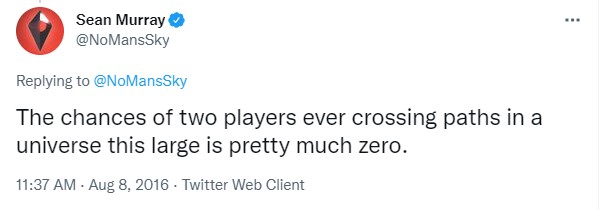Game design should never be an isolated process, for a dynamic relationship between designer and player must be achieved within stages of development to make sure that the designer’s ideas translate into the game in a legible way for players. Tracy Fullerton’s book Game Design Workshop explores this concept on a deeper level, especially focusing on what happens to a game when this connection does not exist. She expresses that a lack of player understanding or frustration leads to games being D.O.A. which stands dead on arrival or in her own words “a game that’s no fun to play” (7). As her main focus of this section discussing D.O.A. relates to player designer disconnect, I wanted to explore a popular example of wide scaled developer and consumer discord, and how advancements in technology has allowed post release updates to factor into this relationship as well.
Within the discussion of D.O.A. games, it would be disingenuous not to mention the main reason games of this nature are released: time constraints. It seems that with any announcement of game delays, you will commonly see internet forums flooded with defenders of the delay utilizing the tried and true Shigeru Miyamoto quote: “a delayed game is eventually good, but a rushed game is forever bad.” However, this seems to be a more nuanced question within modern times as games that were once bombarded by hate and given a D.O.A. stamp on their release slowly changed within public opinion. And there is no better example of this than Hello Game’s highly anticipated 2016 game, No Man’s Sky. No Man’s Sky is an open world action-adventure survival game in which players are free to explore an ever expanding universe where its planets are procedurally generated. A core concept to the game that was promised by game director Sean Murray was that players would be able to find other players traversing the world in-real time. So a massive controversy had unfolded when the game was released in the summer of 2016 and players were not able to locate each other despite being in the exact same location on the same planet.

What Sean Murray had chalked up just a few days before release saying that the only reason players cannot find each other is because the universe is so large was proven wrong; thus, a game with so much anticipation behind it easily had a massive drop in players due to this disconnect between the designer/director, Sean Murray, and players. The reason behind No Man’s Sky’s overestimated deliverance was due to time constraints that the team face; however, there once seemingly D.O.A. a game that faced one of gaming’s largest backlash slowly grew into an acclaimed title that is beloved by many. This has been done, of course, through the use of free updates that greatly improve the base game through additional content that was promised. The Hello Games studio took their time throughout the slow drip of content releases and sort of used this post release time as their game testing period.
I’d argue that as the game industry continues to progress to this multistep release process for games, we will see more cases like No Man’s Sky where once hated D.O.A. games get turned into something worthy of critical and audience acclaim. Tragic video game failures of the past like the infamous Atari E.T. would be different within this era where the shipment of a game does not mark the end of its development. While I have seen common criticism of this method to release a bare bones game to get an audience’s general reaction to the missing features and then only continue to work on it if there is outrage, I still think it has merit within fixing problems that can only be explored with extensive playtesting. The game design process is continuing to break past once previously thought to be impossible boundaries as the ways in which development occurs changes; thus, altering key dynamics with the player and designer connection.

